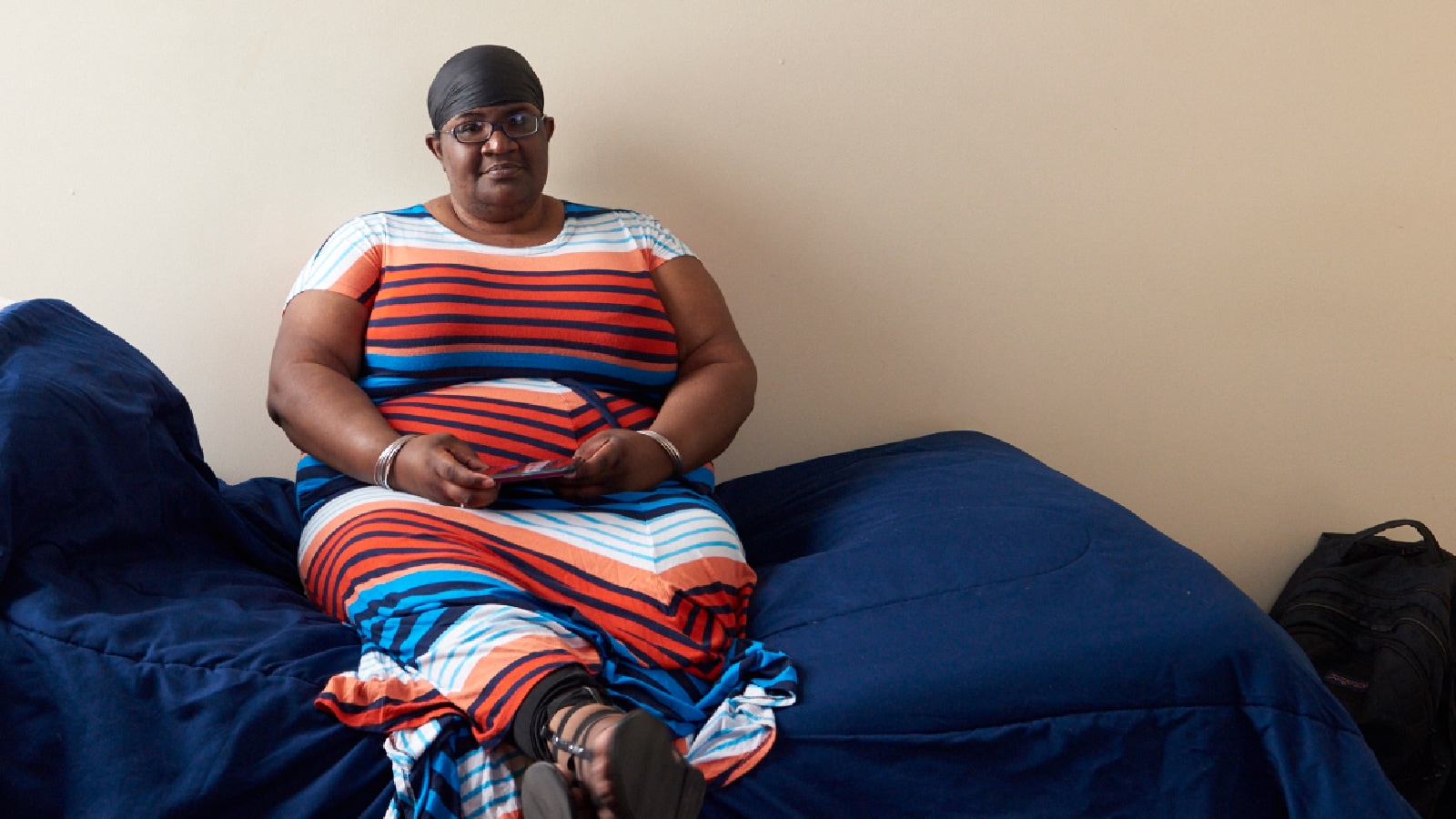
Five questions with our Foundation President Melissa MacDonnell

- Why is youth homelessness such an important cause to Liberty Mutual?
At Liberty Mutual Insurance, we believe that progress happens when people feel secure. We also know that young people who experience homelessness are strong and resilient, but those nights of homelessness can chip away at their self-esteem, their hopes, their dreams, and sometimes their very futures. They are not safe or secure. They need to focus on the urgency of today – such as where am I going to find my next meal and where am I going to sleep – which doesn’t leave space to invest in their futures.
- What types of organizations does Liberty Mutual look to partner with to address youth homelessness?
We work collaboratively to make youth homelessness rare, brief, and non-recurring. You'll find us at tables with public officials, researchers, community leaders, and most importantly, young people with lived experience.
In our grantmaking, we look to organizations that address five core outcomes:
- Identification - accurately identifying youth and young adults experiencing homelessness and housing instability so that they can be afforded appropriately designed and targeted solutions
- Stable Housing - finding a home that allows for consistent self-care and lowers barriers to education and employment by providing an address, mailbox and a private place for work and study
- Health and Wellbeing - providing access to quality physical health, mental health and substance use services and support, basic needs like food and clothing, and training in key competencies, attitudes, and behaviors that will better equip them to successfully transition to adulthood.
- Education and Employment - finding living-wage jobs that support upward economic mobility and sustainable exits from homelessness. Education opens opportunities for employment and community engagement.
- Permanent Connections - forming lifelong connections with emotionally secure adults who provide love, a sense of belonging, advice, mentorship, counseling, a safety net, guidance and other support and resources that are needed over a lifetime.

- Where does this crisis stem from?
If we start by looking at data like Chapin Hall’s Voices of Youth Count (VoYC) at the University of Chicago, over a third of young people who experience homelessness have lost a parent or primary caregiver within the prior year. We know that young people who lose a parent or guardian are extremely vulnerable.
We also know there is a cliff effect into homelessness for young people who are in the care of state systems. VoYC revealed that more than half of young people who experience homelessness are exiting state systems – either court or foster care – and aren’t equipped with an exit plan.
The data also shows that 36% of homeless youth are African American males. The disproportionality of homelessness experienced among black youth mirrors racial disparities documented elsewhere like school suspensions, incarceration, and foster care placement.
Further, the data shows that 20–40% of homeless youth are LGBTQ+. According to the VoYC report, the progression to homelessness for LGBTQ youth often stems from a lack of acceptance that young people experience both inside and outside of the home.
In addition to these risk factors, a lack of education and employment rapidly perpetuates the cycle of poverty and creates barriers to finding and maintaining housing. Keeping homeless youth in school or within workforce development programs is difficult given the transient nature of their lives, but it's absolutely critical to their futures.
- How has the COVID-19 pandemic affected this crisis and your ability to help people?
The impact of COVID-19 on young people spans from alarming levels of school absenteeism, to hunger, to housing insecurity, to mental health challenges, and uncertainty about what the future may hold. Social distancing led to fewer available shelter beds and likely, limited opportunities to crash on friend’s couch. Additionally, the cost to provide services has risen, impacting both individuals and nonprofits.
- How can the community, as well as society, get involved?
There’s never been an integrated approach to serving homeless youth. Instead, we try to hold systems accountable that don’t have the infrastructure, mandate or resources to serve young people at greatest risk of homelessness. With these young people in mind, we need to broaden the scope of the systems intended to help young people launch into adulthood.
For people wondering what role they play and what they can do to help, simply being here and learning more about the impact of youth experiencing homelessness is so important. You can support youth homelessness-focused organizations like HopeWell, More Than Words and Bridge Over Troubled Waters that are all doing incredible work by donating directly or signing up to volunteer.